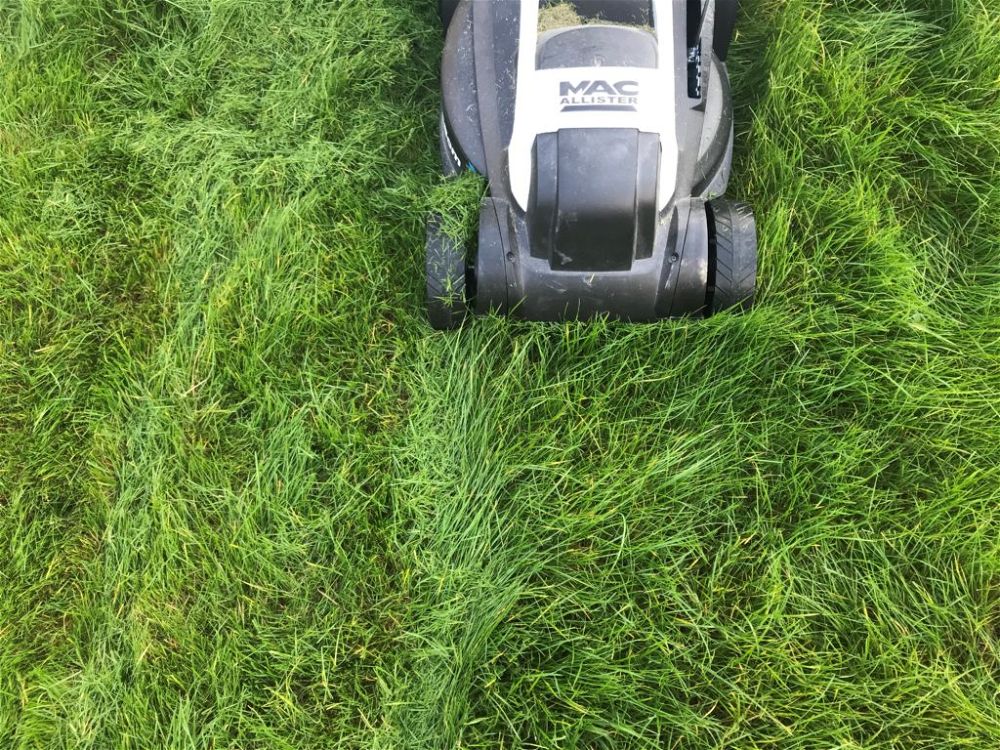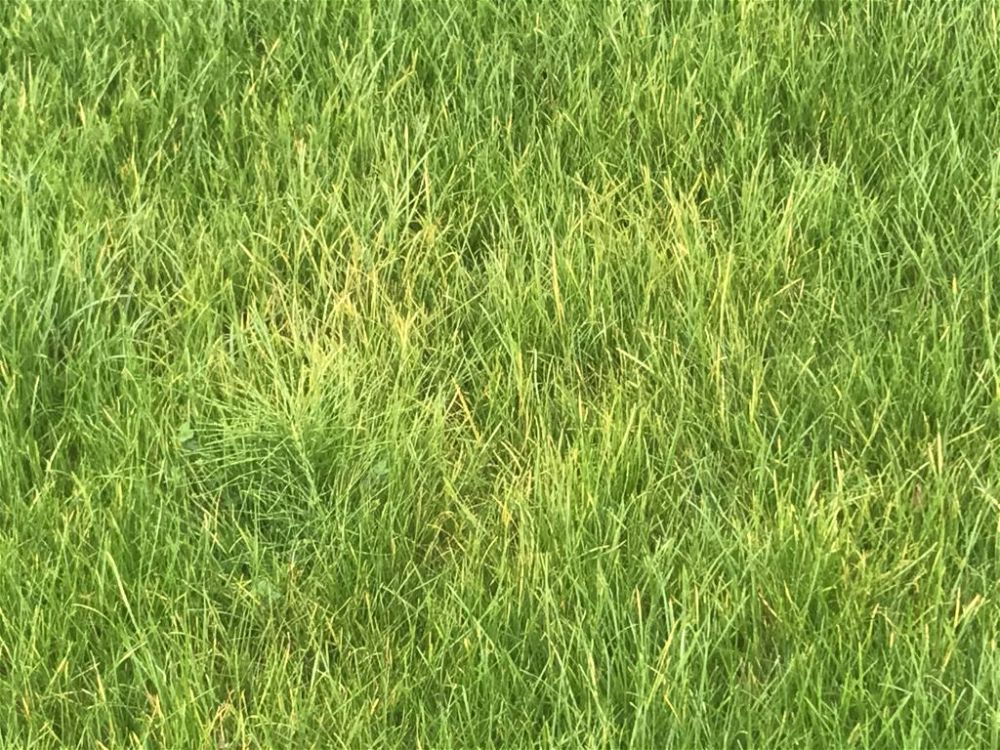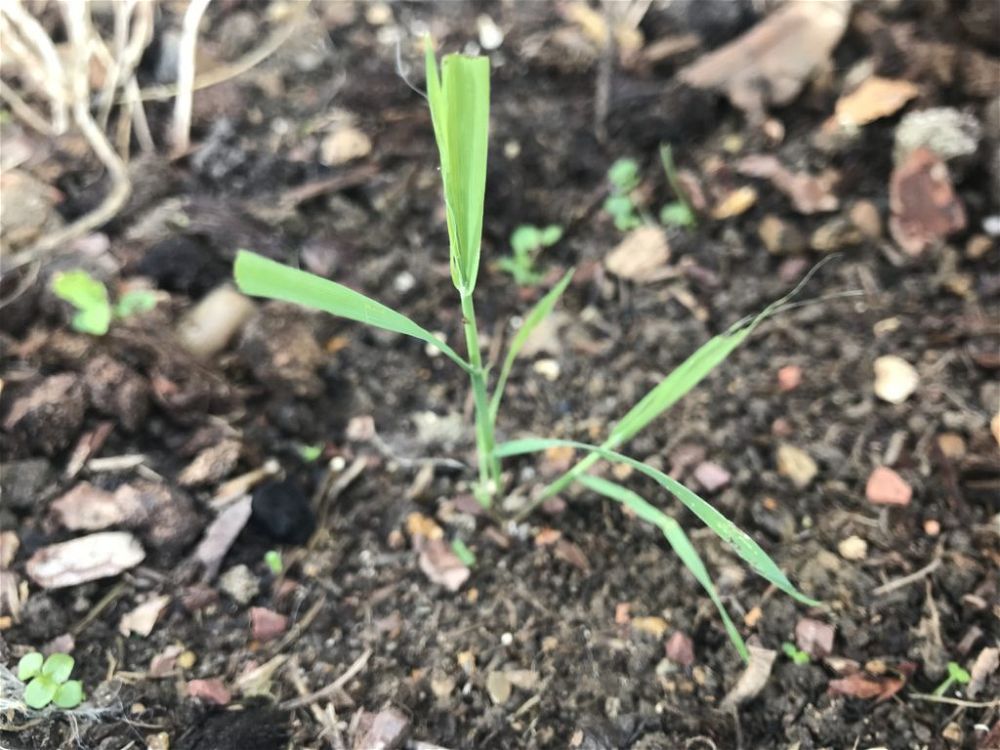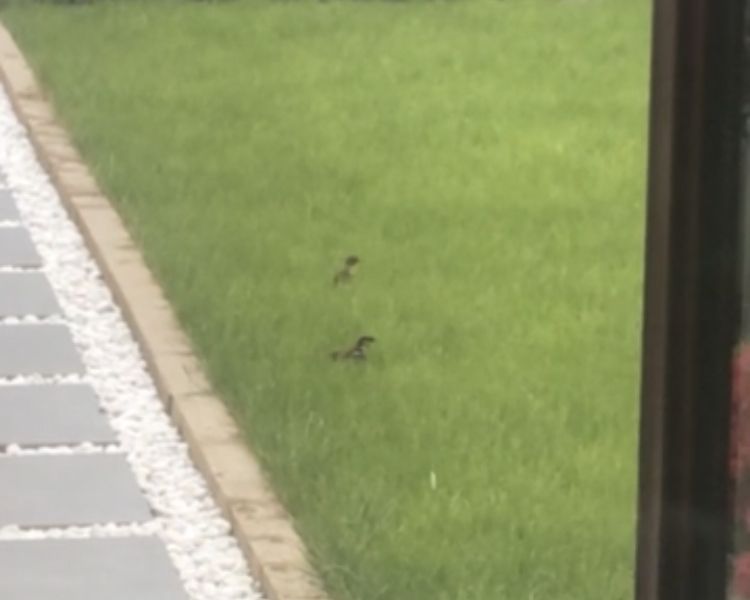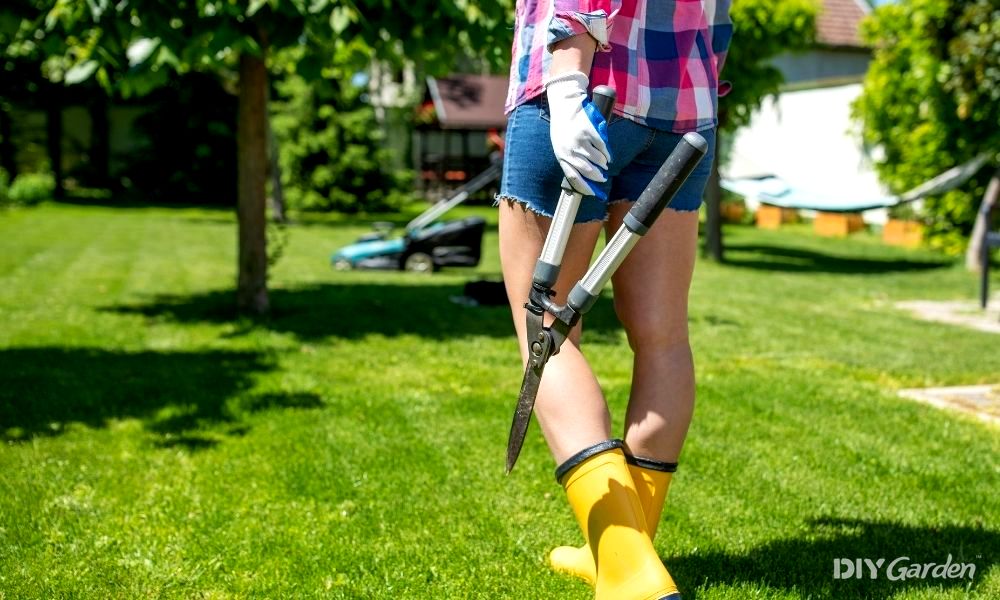
Growing your own grass from seed can be highly rewarding. There’s something very satisfying about watching the sprouts shoot out from the ground and start thriving.
If you’ve just planted grass seed and you’re wondering when you can walk on it, here’s everything you need to know about what happens during those first few weeks after planting.
How Long After Planting Grass Seed Can You Walk on it?
Grass seed that has just been planted is extremely fragile. Most types of seed will start to sprout after 4 weeks. But some can take as long as 8 weeks.
To be on the safe side, avoid walking on your grass for at least 4 weeks. If the shoots aren’t very high at 4 weeks, give it another month. If you have pets, try and keep them off the lawn during this time, too.
Before you start walking on your new grass like normal again, make sure you wait until it’s reached around 3 inches in height and you’ve mowed it at least 3-5 times.
When Can You Walk on Newly Sown Grass?
To help your newly sown grass thrive, try not to walk on it for as long as possible. Any kind of disruption to the soil in the early stages can easily damage the seeds. The less you walk on your newly sown grass, the higher the chances of survival.
While it should be okay to walk on new grass after a month, this will depend on several factors. As a guide, here’s when you should (and shouldn’t) walk on newly sown grass:
- No visible sprouts – No walking
- Visible sprouts less than 3 inches tall – No walking
- Sprouts that are more than 3 inches tall – You can walk on the grass and mow it, but keep foot traffic to a minimum
- After 3-5 mows – You can walk on the grass as normal
What Happens if You Walk on New Grass?
New grass is extremely delicate, especially when planted from seed. If you walk on grass before it’s had the chance to fully establish, you can disrupt the germination, damage the seeds and even kill them off completely.
To make matters worse, if the seeds die from too much foot traffic, weeds will waste no time filling the gaps. While a few weeds on the grass may not look too terrible, they can sap the energy from your entire lawn and weaken it. Weaker grass makes it more prone to diseases, infestations and yellowing.
By not walking on your new grass until it’s ready, you’ll be helping it grow stronger and healthier.
How Long Does it Take for Grass Seed to Germinate?
When planted in good conditions, grass seeds can grow very quickly. If the weather is warm and the soil has been kept moist, it should only take between 5-10 days for grass seeds to germinate.
After around 4 weeks, you should see sprouts starting to poke out from the ground. Depending on the conditions and the grass seed you have, it can take as long as 8 weeks for your grass to have grown enough to mow or walk on.
Tips on How to Make Your Grass Seed Grow Faster
1. Choose the Right Seed
When shopping around for grass seed, you’ll likely notice that there are many different types. While grass is usually pretty standard in terms of how it looks, you can buy seeds for different uses.
For example, some lawn seed is great for planting in shady areas, while others are more drought tolerant. If you want your grass seed to grow faster, make sure you choose the best type for your climate.
2. Prepare the Soil Beforehand
The better quality your soil is, the quicker your grass seed will grow. Ideally, you want to have loam soil for a healthy lawn. This is soil that’s mixed with sand, silt and a small amount of clay. You also want your soil to be loose enough that water drains easily.
To boost the quality of your soil before planting, use organic fertilisers and aerate the soil. This can give it a boost in nutrients and provide new roots with enough space to grow.
3. Keep it Hydrated
Grass needs a lot of water to survive. The best way to tell if your grass seed needs water is to look at the soil. If it’s light brown and dry, it needs watering. If it’s dark and wet to the touch, it’s fine.
For the best results, you’ll want to make sure your lawn is moist during the first few weeks after planting. Once you can see the sprouts starting to grow, you’ll want to keep it deeply watered. Planting your grass seed in mid-autumn when the weather is warm and rainy is ideal (and means less maintenance work).
4. Keep Birds Away
When I first planted grass seed on my lawn, I was so pleased to see a bunch of sparrows out in the garden the next morning. That was until I realised they were eating all the seed I’d just sowed!
While having local wildlife enjoy your garden is pleasant, you’ll want to keep them off the lawn when you’re growing grass seed. You can cover it with special netting or create a decoy by having birdseed available elsewhere in your garden.
5. Don’t Walk on It
In the early stages, it’s best to keep off your lawn completely. This will protect the seed from any damage and help it grow quicker.
Conclusion
Planting grass from seed and watching it grow can be highly satisfying. As long as you look after it in the early weeks by keeping it hydrated and reducing your foot traffic, you’ll have a luscious lawn just in time for summer!
